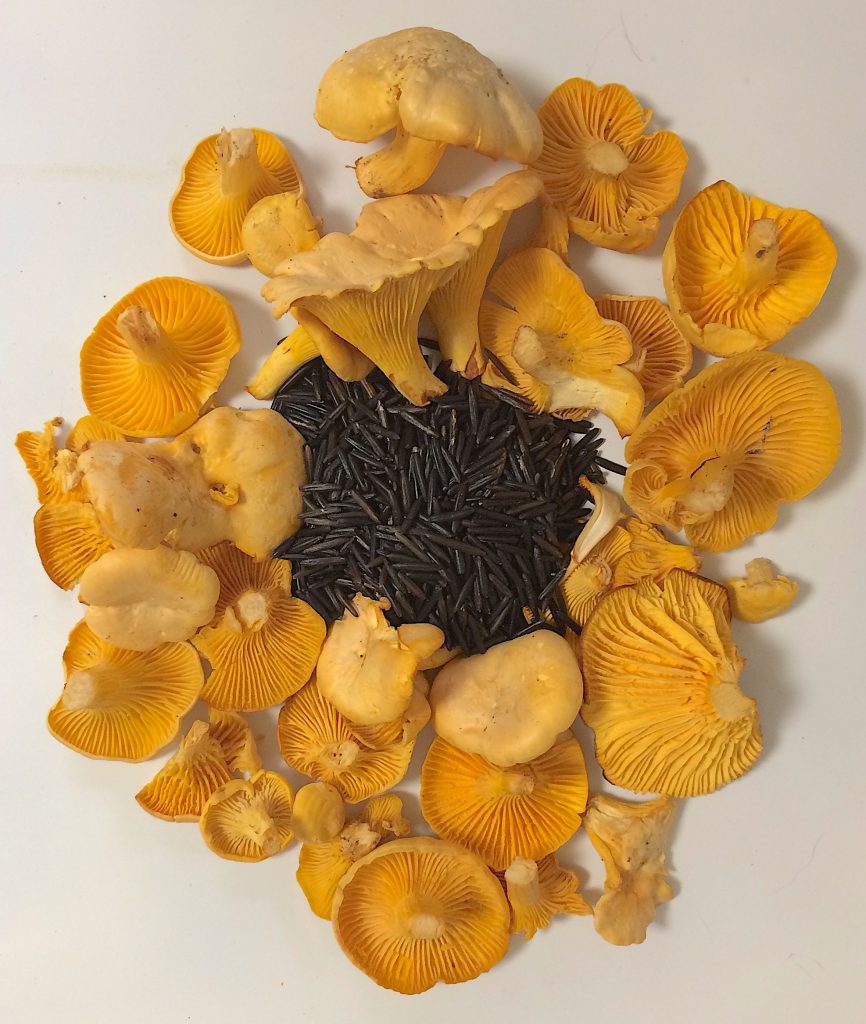
Wild Chanterelles and wild rice waiting to be cooked. Photo by Green Deane
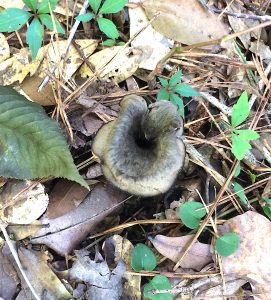
Edible Black Trumpet Mushroom. Photo by Green Deane
There’s an old phrase: “Sometimes you have to bow to the absurd” meaning you can’t ignore the bizarre even if you’d like to. We should change the phrase slightly to “sometimes you have to bow to the obvious.” Last Sunday during our foraging class in Gainesville we could not ignore the chanterelles. And although the focus of the foraging class is not mushrooms per se it would have been wrong to ignore these tasty fungi. There were enough for everyone wanted some to go home with many. More so, the students also developed a quick eye for finding them. You can be sure chanterelles will be foraged for again. I also had a personal best. I found a Black Trumpet mushroom. I have been with others when they found the edible chanterelle relatives and I have seen them on hiking trails in the Appalachian Mountains. But, this was the first one I found in Florida. Incidentally, during Saturday’s class in Orlando we saw Ringless Honey Mushroom (unusual this time of year) the so-called White Chicken of the Woods, Laetiporus persicinus (more on that edible next week) and Ganoderma curtisii, a medicinal Reishi mushroom some try to eat.
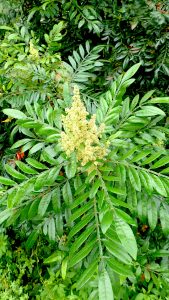
Sumacs are in blossom. Photo by Green Deane
What is that? It’s a common question locally now that sumacs are in bloom. Their creamy terminal blossoms stand out looking somewhat exotic among the dark green foliage. The most common species here is Winged Sumac which is also one of the most widely-distributed sumac in North America. It’s found nearly everywhere though in different locales other species may dominate. Where I grew up in Maine Staghorn Sumac was the common species and grew quite tall. I see them often when I visit North Carolina. The key to making sure you have an edible sumac and not toxic Poison Sumac or Brazilian Pepper is location of the blossom and subsequent fruit. Edible sumacs have terminal clusters of medium to dark red berries covered with fine hair. In this case “terminal” means they are on the very end of the branch, like the blossom on the left. Brazilian Pepper has pink berries that are further down the branch. Poison Sumac, which only grows only in wet places, has dull cream to green-cream berries also further down on the stem. To read more about sumacs go here.

Foraging classes are held rain or shine.
Foraging Classes are about three hours long and cover edible and medicinal plants and mushrooms we find that day. It’s all hands on. Sampling is allowed.
The Saturday class Aug 11 will be rescheduled for September.
Sunday, August 12, Wickham Park, 2500 Parkway Drive, Melbourne, FL 32935-2335. Meet at the “dog park” inside the park, 9 a.m.
Saturday, August 18th, Wekiva State Park, 1800 Wekiwa Circle, Apopka, Florida 32712. There is a park admission Fee: $6 per vehicle. $4 for a single occupant vehicle, $2 pedestrians or bicyclists. Meet at the Sand Lake parking lot (after you pay pass the parking lot on your left then turn left at the Y. Go to the end. This is a rustic walk; No water, no official bathrooms, and a hot time of year. The class is three hours or less.) I recommend you arrive early as the park fills with bathers.
Sunday August 19th, Eagle Park Lake, 1800 Keene Road, Largo, FL33771. 9 a.m. Meet at the pavilion near the dog park.
Monday, August 27th, 1624 Taylor Road, Honea Path, South Carolina. Ever want to meet Green Deane but he never seems to come to your neck of the woods? Then mark Monday, August 27th, on your calendar. Green Deane will have a free foraging class in Honea Path, South Carolina, at the Putney Farm, 1624 Taylor Road. Several folks have signed up. The foraging begins at 10 a.m., rain or shine (except hurricanes.) All of Green Deane’s classes are hands on, walking outside. Wild edible plants, medicinals and perhaps a mushroom or two will be on the agenda (as Green Deane is in the Carolinas that week studying local mushrooms.) Donations to Putney Farm are appreciated as they are hosting the event. For more information you can contact Putney Farm on Facebook or Green Deane at GreenDeane@gmail.com.
Saturday, September 1st, TBA
Sunday, September 2nd, Red Bug Slough Preserve, 5200 Beneva Road, Sarasota, FL, 34233. 9 a.m.
Saturday, September 8th, Blanchard Park, 10501 Jay Blanchard Trail, Orlando, FL 32817. 9 a.m. Meet at the pavilion east of the tennis courts near the YMCA.
To learn more about the classes go here.
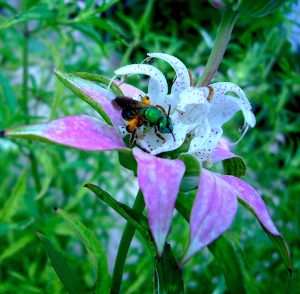
Monarda punctata, Horsemint, Beebalm. Photo by Green Deane
Wild mints are prima donnas. Once on stage they hate to get off. Locally I would expect to see Horsemint, Monarda punctata, in full bloom in a few weeks but it has pushed the season and can be found now. Horsemint can flower for several months. This Sunday we located some exactly where one would expect to find it: On a dry bank up from a trail. You can also find it in the same area near roads especially roads that cut through a sand hill. Look for the showy pink bracts. If you’re in the Carolinas you’ll be seeing the bright red Monarda didyma. In my native state of Maine it was called Oswego Tea. No doubt there is a showy mint near you. If you want to read about Horsemint you go here.

Green Deane Forum
Want to identify a plant? Need to identify a plant? Looking for a foraging reference? Maybe you have a UFO, an Unidentified Flowering Object, you want identified. On the Green Deane Forum we — including Green Deane — chat about foraging all year. And it’s not just about warm-weather plants or just North American flora. Many nations share common weeds so there’s a lot to talk about. There’s also more than weeds. The reference section has information for foraging around the world. There are articles on food preservation, and forgotten skills from making bows to fermenting food. Topics have included: Tea, Salt and Amla, Small Bush and Flower, Ragweed? Pine Cough Drops and Needles, Odd Vine? Hunting and Trapping Ethics. Knife Accidents. Some Kind of Lespendeza and Survival Garden. You can join the forum by clicking on the button in the menu line.

Green Deane DVD Set
All of Green Deane’s videos available for free on You Tube. They do have ads on them so every time you watch a Green Deane video I get a quarter of one cent. Four views, one cent. Not exactly a large money-maker but it helps pays for this newsletter. If you want to see the videos without ads and some in slightly better quality you can order the DVD set. It is nine DVDs with 15 videos on each. Many people want their own copy of the videos or they have a slow service and its easier to order then to watch them on-line. They make a good gift for that forager you know. Individual DVDs can also be ordered. You can order them by clicking on the button on the top right of this page or you can go here.
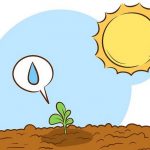 Donations to upgrade EatTheWeeds.com and fund a book have gone well and made it past the half way mark. Thank you to all who have contributed to either via the Go Fund Me link, the PayPal donation link or by writing to Green Deane POB 941793 Maitland FL, 32794. The Forum needs work and several function problems need to be fixed specifically the search and categories ( a partial solution is that when you do a search other finds are directly below the main one shown. Scroll down.) A continuing problem is finding an indexing program or function for a real book. Writing programs used to do it automatically if you designated a term for indexing. Now that most books are ebooks most writing programs do not provide and indexing function. The hunt continues.
Donations to upgrade EatTheWeeds.com and fund a book have gone well and made it past the half way mark. Thank you to all who have contributed to either via the Go Fund Me link, the PayPal donation link or by writing to Green Deane POB 941793 Maitland FL, 32794. The Forum needs work and several function problems need to be fixed specifically the search and categories ( a partial solution is that when you do a search other finds are directly below the main one shown. Scroll down.) A continuing problem is finding an indexing program or function for a real book. Writing programs used to do it automatically if you designated a term for indexing. Now that most books are ebooks most writing programs do not provide and indexing function. The hunt continues.
This is weekly issue 316. There will be no newsletter August 28, 2018. I will be in the Carolinas studying mushrooms.
If you would like to donate to Eat The Weeds please click here. Or you can use my Go Fund Me link, or by writing to Green Deane POB 941793 Maitland FL, 32794.

